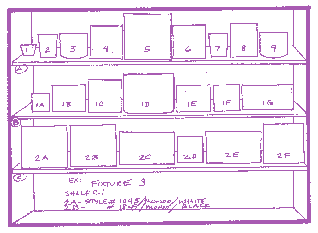Speaking of brand disconnect
1. I just saw a web ad for Volvo cars, in part using the slogan, "Built Ford Tough." Umm, Ford is in dire straits and Volvo a well-respected Swedish-based company.
2. A discussion on the concerned4dcps e-list about the perceptions of charter vs. traditional public schools. Regardless of reports in terms of outcomes, charters are opening new schools and expanding to new campuses, while the traditional system is contracting and closing schools.
Which trajectory do you want to jump on?
3. Good article in yesterday's NYT about the Pontiac Solstice. This sweet car is experiencing sales declines, and the Pontiac division continues to lose sales while the same car sold by Saturn is increasing sales by 15%, and Saturn is a successful division.
One product can't change an image and perception. And you have to deal with reality, e.g., you can't say because Williams-Sonoma opens one of their stores in DC, and dresses the windows better than a dollar store, but still like all their other stores, that DC is the #1 retail environment.

Text and image from GLM Shows Display and Merchandising Guide:
The placement of merchandise that is arriving to the store can be planned out on paper by using a Planogram before the products actually arrive to the store. A planogram is a retailer's drawing (blueprint) which visually communicates how merchandise and props physically fit onto a store fixture or window to allow for proper visibility and price point options. The retailer can plan to mix the new products with current items or initiate entirely new displays. If you have more than one store this is an excellent way to communicate to your staff how you would like displays executed.
Somewhere I have a bunch of photos of planograms from drug stores in Philadelphia (CVS and Rite Aid). There, store managers have a bad habit of taping them up on the shelves so the stockers know what to do. But then people who know retail also can see what CVS or Rite Aid is doing also...
Labels: branding-identity, commercial district revitalization, retail



0 Comments:
Post a Comment
<< Home